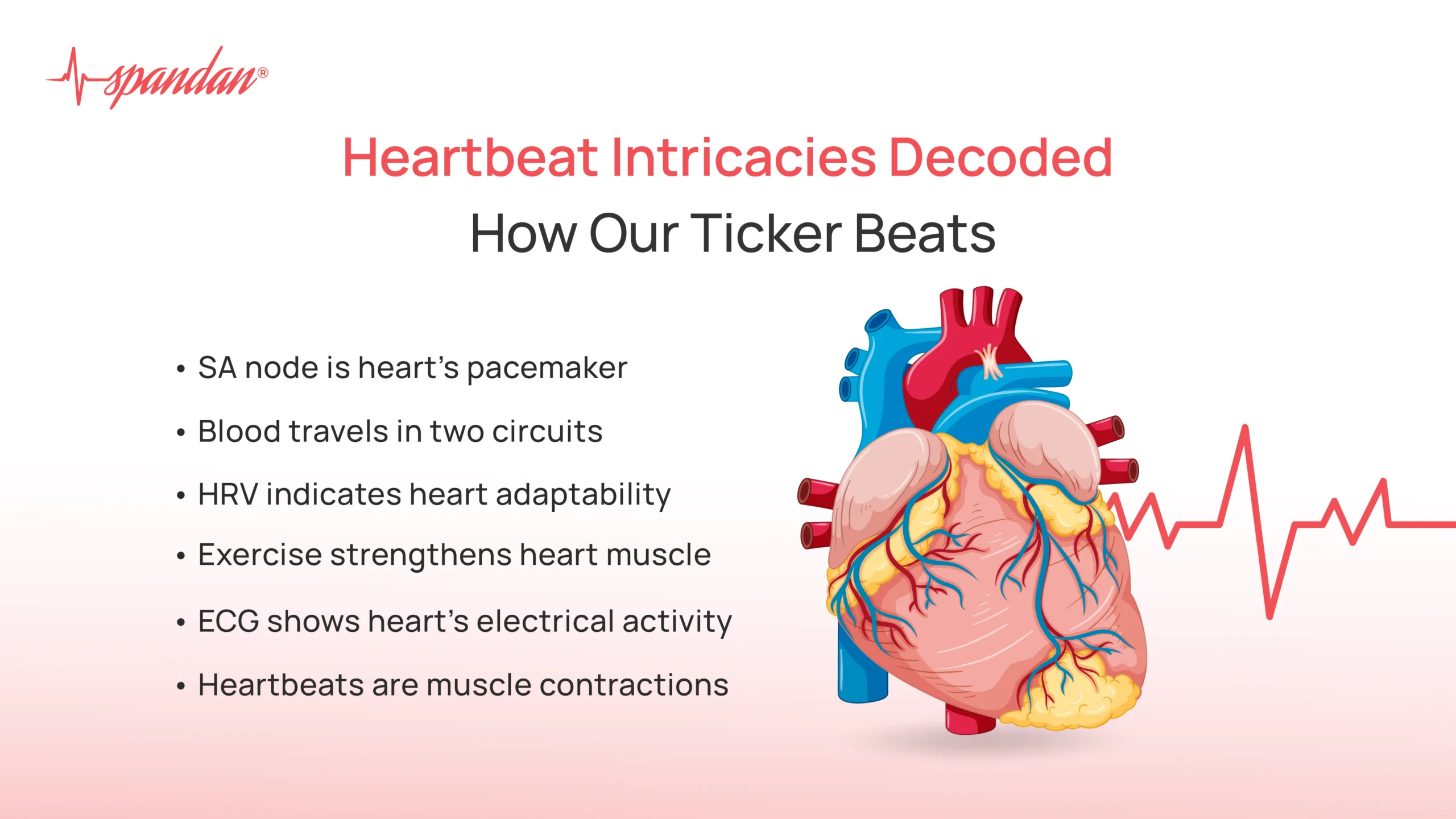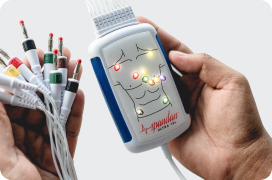
Related Article
Author:- Mr. Ritesh Sharma
The human heart, a marvel of biological engineering, beats tirelessly to sustain life. Each heartbeat is a complex yet coordinated event, a symphony of muscle contractions and electrical impulses that ensures oxygen-rich blood reaches every corner of our body. Understanding the intricacies of the heartbeat not only demystifies this vital process but also highlights the importance of heart health in our overall well-being.
The Basics of a Heartbeat
A heartbeat is a cycle of contractions and relaxations of the heart muscle, driven by electrical signals. This rhythmic cycle begins in the sinoatrial (SA) node, often referred to as the heart’s natural pacemaker. Located in the right atrium, the SA node generates electrical impulses that travel through the heart, orchestrating its beat. These impulses cause the atria to contract, pushing blood into the ventricles. The electrical signal then passes to the atrioventricular (AV) node, which acts as a gateway, slowing the impulse before it moves into the ventricles. This delay ensures the ventricles fill with blood before contracting.
The Journey of Blood
Every heartbeat propels blood through two main circuits: the pulmonary circuit and the systemic circuit. In the pulmonary circuit, the right side of the heart pumps deoxygenated blood to the lungs. Here, carbon dioxide is exchanged for oxygen. The oxygenated blood then returns to the left side of the heart, ready to be pumped into the systemic circuit. This second circuit distributes oxygen-rich blood throughout the body, nourishing tissues and organs. After delivering oxygen and collecting waste products, the now deoxygenated blood returns to the right side of the heart, and the cycle begins anew.
Electrical Activity and the ECG
The electrical activity of the heart can be recorded and visualized using an electrocardiogram (ECG or EKG). An ECG provides a detailed picture of the heart’s electrical activity and can reveal abnormalities in heart rhythm, known as arrhythmias. Each beat of the heart is represented by a wave on the ECG: the P wave (atrial contraction), the QRS complex (ventricular contraction), and the T wave (ventricular relaxation). By analyzing these waves, doctors can diagnose various heart conditions and monitor the effectiveness of treatments.
Heartbeat Variability
While a normal heartbeat is regular and steady, variations can occur. Heartbeat variability (HRV) refers to the slight variations in time between each beat. HRV is an important indicator of autonomic nervous system function and overall heart health. High HRV is generally a sign of good health and resilience, indicating that the heart can adapt well to stress and environmental changes. Conversely, low HRV can be a marker of stress, fatigue, or underlying health problems.
Factors Influencing Heartbeat
Several factors can influence the heartbeat, including physical activity, emotional state, medications, and health conditions. During exercise, the heart rate increases to supply muscles with more oxygen-rich blood. Stress and anxiety can also elevate heart rate, as the body prepares for a ‘fight or flight’ response. Medications, such as beta-blockers, can slow the heart rate, while stimulants like caffeine can increase it. Certain health conditions, such as thyroid disorders or heart disease, can cause abnormal heart rhythms.
Heartbeat and Health Monitoring
With advancements in technology, monitoring the heartbeat has become more accessible than ever. Portable ECG devices, such as Spandan, allow individuals to track their heart health at home. These devices can detect various arrhythmias, heart dysfunctions, and myocardial infarctions with high accuracy. Regular monitoring can help in the early detection of heart conditions, enabling timely intervention and better management of heart health.
Common Heartbeat Disorders
Understanding common heartbeat disorders is crucial for recognizing symptoms and seeking appropriate medical care. Some of the most prevalent conditions include:
- Atrial Fibrillation (AFib): This is an irregular and often rapid heartbeat that can lead to blood clots, stroke, and heart failure. It occurs when the atria beat chaotically and out of sync with the ventricles.
- Bradycardia: This refers to a slower than normal heart rate. While it can be normal for some individuals, especially athletes, it can also indicate problems with the heart’s electrical system.
- Tachycardia: This is a faster than normal heart rate. It can be caused by various factors, including stress, fever, or heart conditions. If sustained, it can lead to complications.
- Premature Beats: These are early heartbeats that disrupt the regular rhythm. While often harmless, they can sometimes signal underlying heart conditions.
Maintaining a Healthy Heartbeat
Maintaining a healthy heartbeat is fundamental to overall health. Here are some tips to keep your heart in top shape:
- Regular Exercise: Engaging in regular physical activity strengthens the heart muscle, improves circulation, and helps maintain a healthy weight. Aim for at least 150 minutes of moderate-intensity exercise per week.
- Heart Healthy Diet: Eating a diet rich in fruits, vegetables, whole grains, and lean proteins supports heart health. Limit intake of saturated fats, trans fats, and sodium to reduce the risk of heart disease.
- Stress Management: Chronic stress can negatively impact heart health. Practice relaxation techniques such as deep breathing, meditation, or yoga to manage stress effectively.
- Avoid Smoking and Excessive Alcohol: Smoking and excessive alcohol consumption can damage the heart and blood vessels. Quitting smoking and moderating alcohol intake are vital steps in protecting heart health.
- Regular Check-ups: Regular health check-ups and screenings can detect early signs of heart disease. Discuss any concerns about your heartbeat with your healthcare provider.
The Future of Heartbeat Monitoring
The future of heartbeat monitoring lies in continuous, real-time tracking using wearable technology. Smartwatches and fitness trackers equipped with advanced sensors can monitor heart rate, HRV, and detect irregularities. These devices provide valuable data that can be shared with healthcare providers for a comprehensive view of heart health.
In conclusion, the heartbeat is a remarkable and intricate process, essential for sustaining life. Understanding how our heart beats and the factors influencing it empowers us to take proactive steps in maintaining heart health. With advancements in technology, monitoring our heartbeat has never been easier, allowing for early detection and better management of heart conditions. By prioritizing heart health, we can ensure our ticker keeps beating strong, supporting a long and healthy life.




